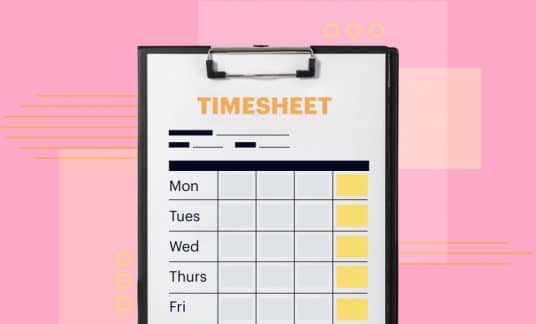Managers and employees alike often find the performance review process to be cringe-worthy. However, an employee performance review is one of the best tools for improving productivity and morale. The trick is to bring the process out of the back room and into the forefront of the management-employee relationship.
Employee Performance Reviews Help, Encourage and Motivate
The real value of a review is in its ability to foster a stronger, more goal-oriented working relationship between management and employees. At its purest form, an employee appraisal is an opportunity to briefly step back and make observations about where an employee is at today and the ideal path for greater success tomorrow. There are 3 key goals of an employee performance review:
- Help employees and managers
- Encourage employees
- Motivate
An annual review is not the place for disciplinary matters. If there are severe performance or other concerns about an employee, those are best aired and managed through a separate process. The process is about creating a proactive environment for growth, not scolding an employee for not doing enough.

How to Craft an Employee Performance Review
A performance review combines a meeting between a supervisor and an employee with a written document that gives an assessment of strengths, areas to improve and goals for the future. If you’re wondering how to write a performance review for an employee, it’s simple, but a few considerations can help maximize the review as an opportunity for both the employee and the employer. Here are 6 items to prioritize during your employee performance review planning and execution:
Frequency
Even though employee reviews often are annual events, an informal process should weave through the entire year, providing an ongoing dialogue about job performance and goals. While this more frequent process should not be the same as a formal employee performance review, the same topics can be discussed as a part of regular manager-employee feedback. Performance reviews should not be filled with surprises, and in fact, most of what is formalized in a review should already be reasonably clear to both the employee and the manager.
Preparation
The best employee reviews provide a 360-degree view of work performance. This view requires preparation and planning and often involves a pre-review process by both the employer and the employee. Leading up to the formal performance review, a manager should discuss the subject employee with other managers to get the desired complete picture of performance and potential.
Understanding
Reviews should be conducted with empathy. Managers should strive to understand the pressures, hurdles and opportunities facing their employees, and express genuine concern for problems and an investment in helping to achieve success.
Honesty
Performance reviews are not supposed to be inquisitions, but they should be frank and honest. No one is perfect, and a useful performance review is not one where employees ace every section. The best review is one that has no hidden agenda, where nothing important is held back. This honesty helps further build a working relationship and increases trust, comfort and productivity, according to an article shared by the National Center for Biotechnology Information.
Basis in Fact
Just as honesty is crucial, so too are specifics when it comes to conducting a performance review with value for the employee and employer. In other words, everything discussed should be linked to specific facts. This is especially important when providing feedback to an employee on areas in which they can improve. Rather than giving general aspirations about how an employee can be more productive or useful, a manager should provide examples and insight as to how a different approach could have been more successful.
Teamwork
Though a supervisor conducts an employee performance review, it should be a collaborative process. Employers and employees are partners on a joint journey for success. When an employee is productive, an organization thrives. Remember, employees can be anxious about the performance review process. Give them a role in working together on goals and steps to meet objectives, and you’ll be providing respect, which has been shown to improve employee loyalty and performance.

Employee Performance Review Template
A performance review document has 2 main roles. First, it gives the reviewer a script. Second, it provides a roadmap for both the employee and employer to keep in mind today and tomorrow.
You can create your own employee performance review template or you can use or adapt an employee performance review template from online resources such as Smartsheet, Quantum Workplace and HR360.
No matter the source, your employee performance review template should include the following:
Details of the Review
These are the “who, when and where” questions: Who will be conducting the review, who the subject of the review is and when it will be conducted.
Welcoming Statement
This can be a simple introductory paragraph that explains the purpose of the review, but it should also outline general goals and set the stage for a collaborative, proactive and positive experience. An introductory statement can set the employee at ease while also explaining the importance of the review and the need for honesty.
Accomplishments
The document should quickly move to the great things that the employee has done in the past year. Starting on a positive note brings the employee into the process, making for a more engaged review.
Strengths
Following this discussion of employee accomplishments, a general discussion of strengths is an opportunity to provide praise for an employee while also introducing the idea of greater possibilities in the future.
Needing Improvement
Now we get to the potentially tricky part of a performance review — talking about areas where an employee is not doing their best. Honesty is crucial, but so too is continued understanding. Again, this is not the time to unleash a diatribe about all of an employee’s failings, but it is not a praise fest either. Constructive criticism that encourages the employee and employer to collaborate on optimizing is key. But, providing a plan for this improvement is even more crucial. This section should set out preliminary deadlines and ways to measure goal progress.
Promotion and the Future
Keeping with the theme of positive honesty, a performance review should discuss the employee’s future, including a potential path that leads to greater responsibility and sharing in success. Raises are not the sole purpose of a review, but if conducted right, a performance appraisal can provide an employer with the information necessary to make promotion decisions.
Effective Employee Performance Review Phrases
Words are important in an employee performance review because they can provide clarity about where an employee stands and what is expected in the future. Examples of effective employee performance review phrases include:
- Increased sales volume from (x) to (x) during the past year
- Completes projects in a timely manner
- Struggles to meet deadlines on (x) projects
- Contributes to team projects above and beyond requirements
- Needs to work on communicating project status with other team members
- Adept at bringing new ideas to the table, especially in (area)
- Provides valuable leadership to (x) project
The list can go on, but the main takeaway is that these employee performance review phrase examples include language that’s to the point and, when appropriate, directs to a specific example of the discussed accomplishment or behavior.
The overall goal with an employee performance review is to help employees improve, and the best way to ensure this is through an ongoing process that encourages open communication and accountability. This way, an annual review becomes a summarization — a brief but important stop to reflect on a longer journey towards success.









